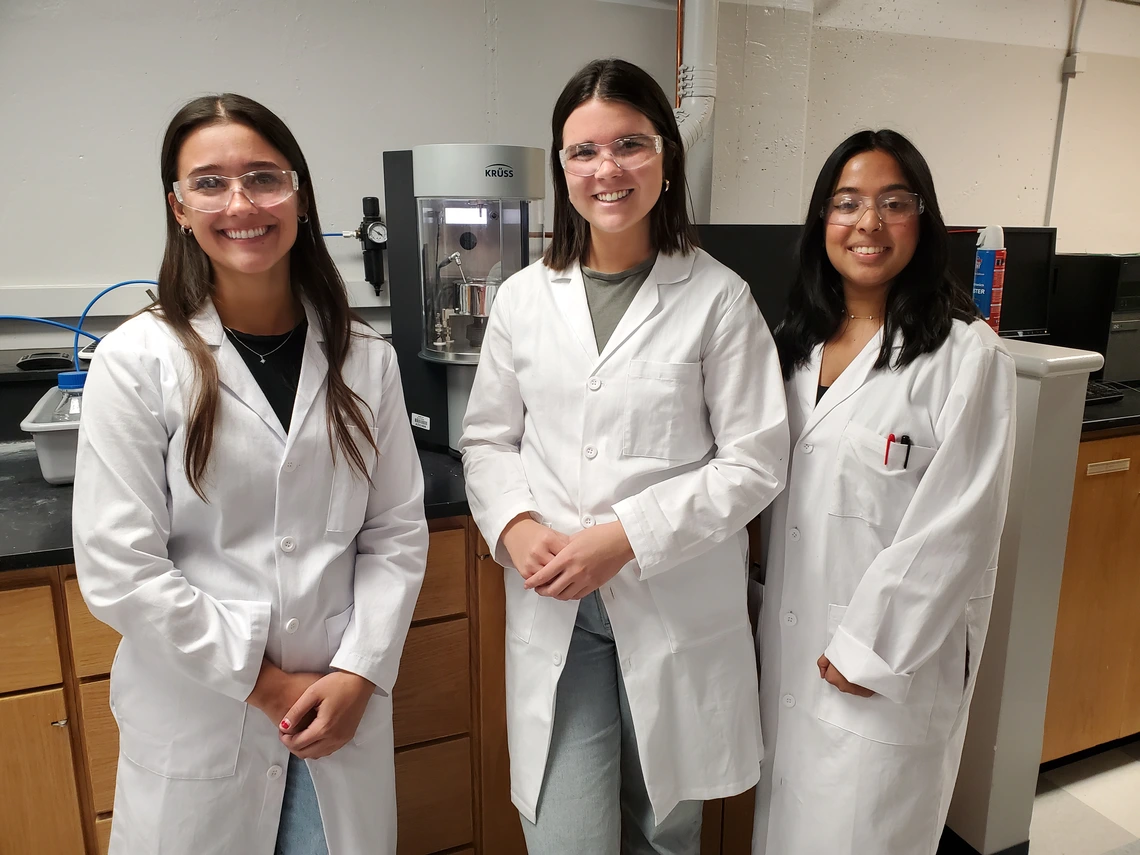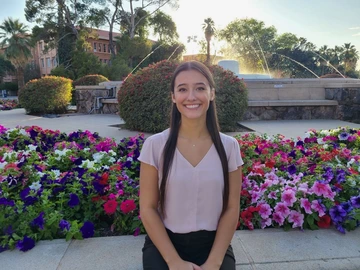Fund elevates undergraduate education – one research project at a time

Roberts undergraduate research fund recipients Addison Seckar-Martinez, Abigale Bahnick and Rohini Ghosh.

Scott Roberts
Scott Roberts, an undergraduate in chemical engineering in the late 1960s, struggled to work his way through college. That is, until chemical engineering professor Thomas Rehm hired Roberts to work in his research lab. That was the beginning of Roberts’ journey toward a PhD from the University of Washington and a 35-year career with Royal Dutch Shell.
“Working in the lab was so formative to my life and career that I want to pay it forward,” said Roberts, who since 2019 has donated annually to student research and is looking to expand the funding.
Humberto Teran received his BS in chemical engineering with Roberts in 1969. He and his wife Kris joined Roberts and donate annually to the Roberts Lab Assistant Fund. Thanks to their combined contributions, each year five to six undergraduates receive $2,500 apiece to conduct semester-long independent research under the mentorship of faculty members.
“We are astonished by how much students grow academically and professionally as a result of this program,” said Department Head Kim Ogden, who hopes to double the number of CHEE undergraduates receiving support to work in research labs.
Roberts recently changed the fund name to CHEE Alumni Research Fund to open it up to donations from others. Dozens more qualified students are eager to take on paid research experiences and would benefit greatly from doing so, said Ogden. “Financial awards and mentorships like these help students bound ahead academically and professionally,” she said.
Recent graduate Jamie Holmstrom, a chemical engineer at Hanford Tank Waste Operations & Closure in Richland, Washington, is among young alumni looking toward a time when she can give to the fund. She worked under associate professor Suchol Savagatrup on a process to detect contaminants in water and graduated in 2024.
“I benefited so much from the experience and mentorship that I am inspired to donate one day so other students can grow as much as I did,” said Holmstrom.
The place where students find their path
From PFAS to semiconductors, students are finding their calling as they conduct research in the lab.

Addison Seckar-Martinez
Addison Seckar-Martinez has come a long way from her early days as an undecided major. She graduates this spring and will start her career at Elemental Scientific in Omaha, Nebraska, with memories of thriving in a department where “everyone knows your name” and publishing in a scientific journal.
Seckar-Martinez was first author on an analysis of aerosol and precipitation compositions in Acadia National Park, Maine, published in the journal Environmental Science: Atmospheres.
“Addison’s publication represents one of only two papers led by an undergraduate student out of nearly 80 papers published over the six-year lifetime of ACTIVATE,” said professor Armin Sorooshian, who leads the university’s NASA ACTIVATE program, an airborne mission studying how particles and clouds interact.
May 2025 graduate Abigale Bahnick worked on materials for printable electronics in associate professor Adam Printz’s lab. Now she is mapping out a career in semiconductors.
Anticipated 2026 graduate Rohini Ghosh investigated PFAS – chemicals that research suggests are linked to a range of health problems – in Savagatrup’s lab, laying the groundwork for graduate school.
“I have improved my ability to think critically, interpret data, and present results with confidence,” she said.
The experiences of Seckar-Martinez, Bahnick and Ghosh demonstrate the crucial ways working in CHEE research labs helps students prepare for fulfilling careers.
Give Today
